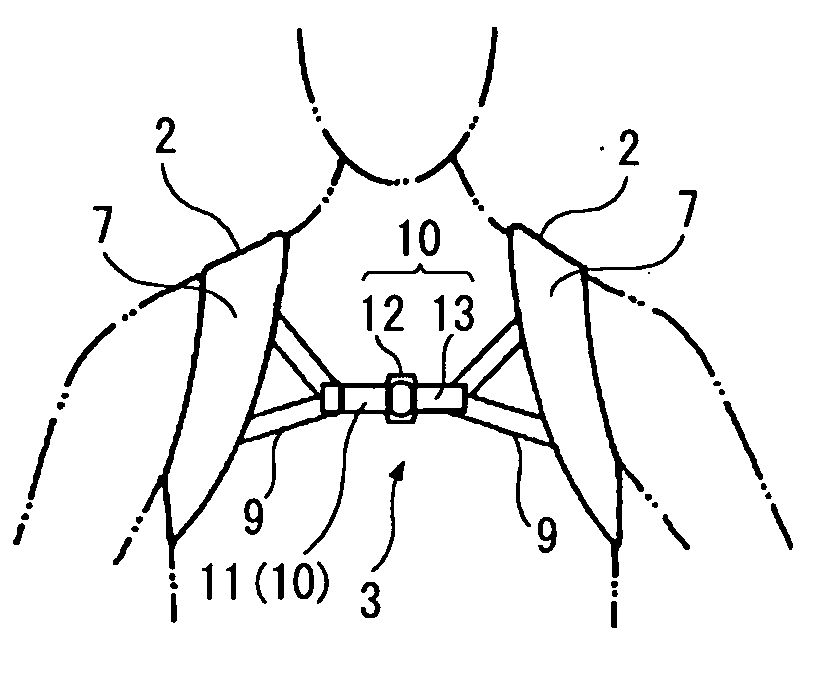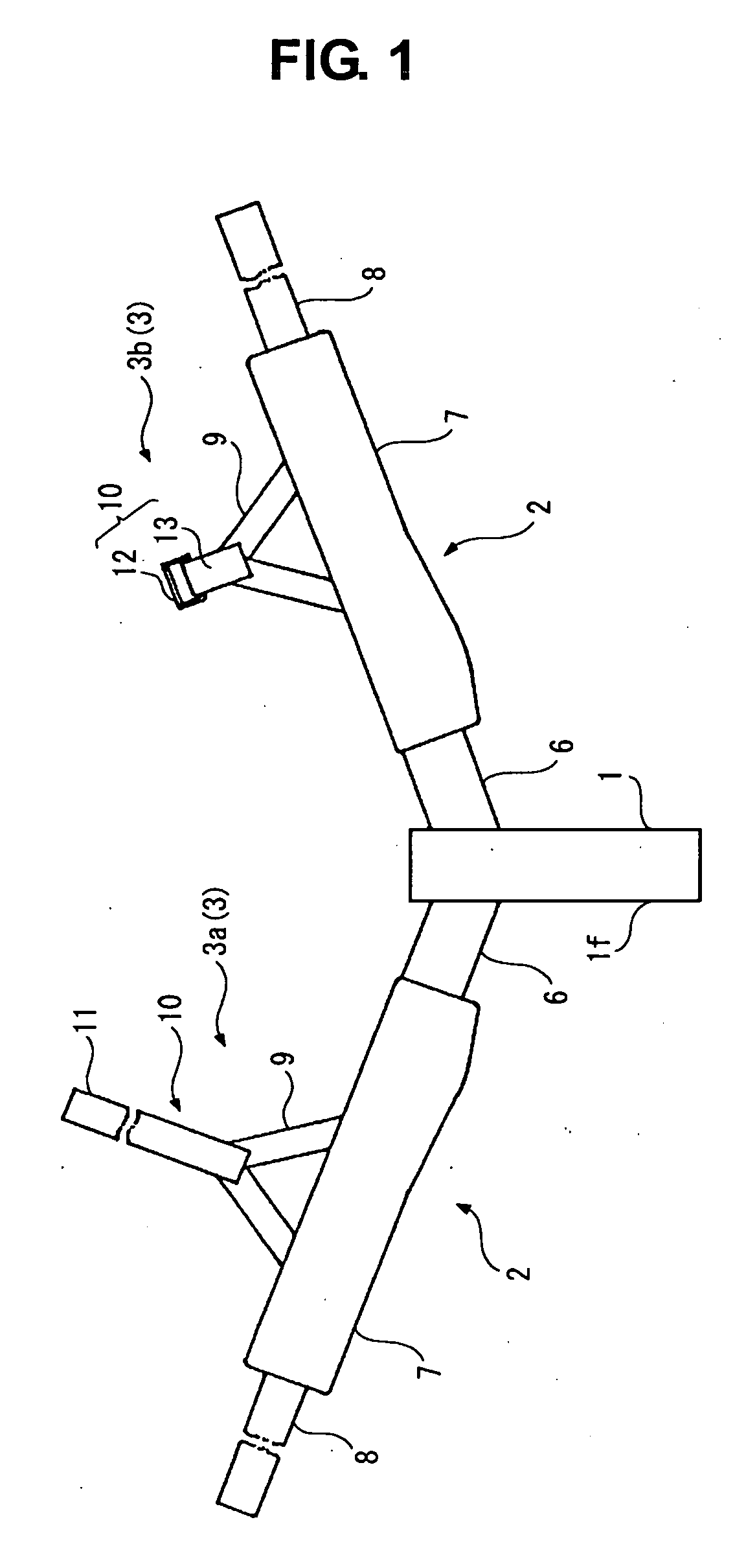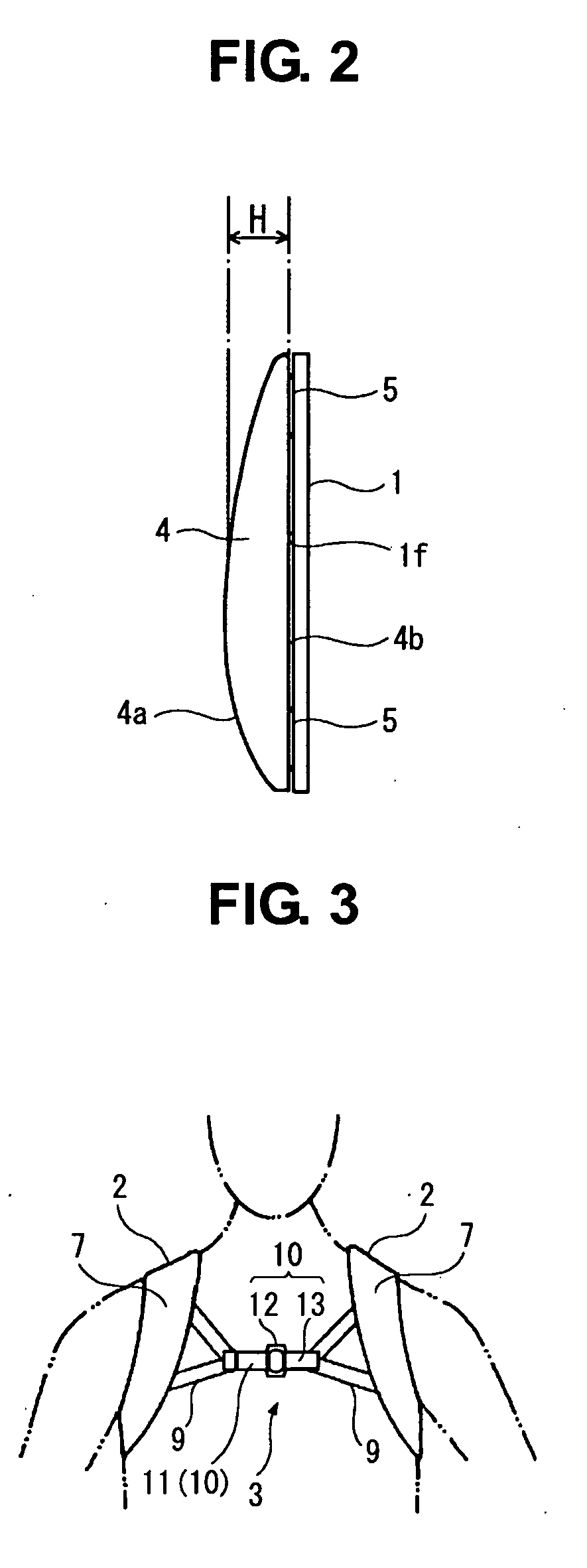Broken collar bone fixing band
a fixing band and broken collar bone technology, applied in the field of fractured clavicle fixing bands, can solve the problems of insufficient fixing force, excessive muscle tension, and shoulder stiffness, and achieve the effect of preventing the effective orderly reset region from being dislocated, reducing the force of the fixing band, and strengthening the stability
- Summary
- Abstract
- Description
- Claims
- Application Information
AI Technical Summary
Benefits of technology
Problems solved by technology
Method used
Image
Examples
Embodiment Construction
[0028] Hereinafter, specific embodiments with application of this invention will be described in detail in reference to drawings.
[0029] First, FIG. 1 shows a structure of the fractured clavicle fixing band according to the first embodiment with application of this invention. The fractured clavicle fixing band according to the first embodiment has a back rest 1, a shoulder belt 2, and a chest front belt 3.
[0030] The back rest 1 is a portion placed along the backbone of a patient wearing the fractured clavicle fixing bond (hereinafter referred to as an user), as in contact with the back. The back rest 1 is formed of, e.g., a fabric material having a pleasant texture and has a contact surface 1f in contact with the user's back, formed in a rectangular shape as well as rendered to touch softly the user. The back rest 1 is, to provide an appropriate rigidity, equipped with, e.g., a plate member of hard plastic, or a rigidity providing member (omitted to be illustrated) such as a plate ...
PUM
 Login to View More
Login to View More Abstract
Description
Claims
Application Information
 Login to View More
Login to View More - R&D
- Intellectual Property
- Life Sciences
- Materials
- Tech Scout
- Unparalleled Data Quality
- Higher Quality Content
- 60% Fewer Hallucinations
Browse by: Latest US Patents, China's latest patents, Technical Efficacy Thesaurus, Application Domain, Technology Topic, Popular Technical Reports.
© 2025 PatSnap. All rights reserved.Legal|Privacy policy|Modern Slavery Act Transparency Statement|Sitemap|About US| Contact US: help@patsnap.com



